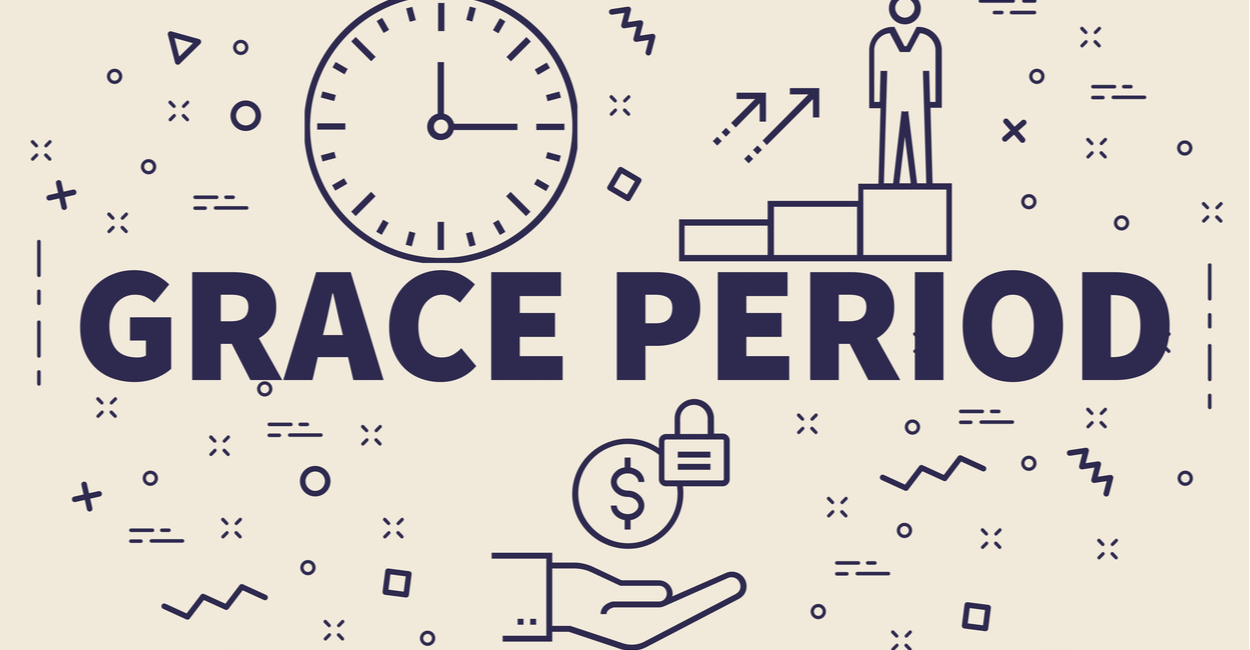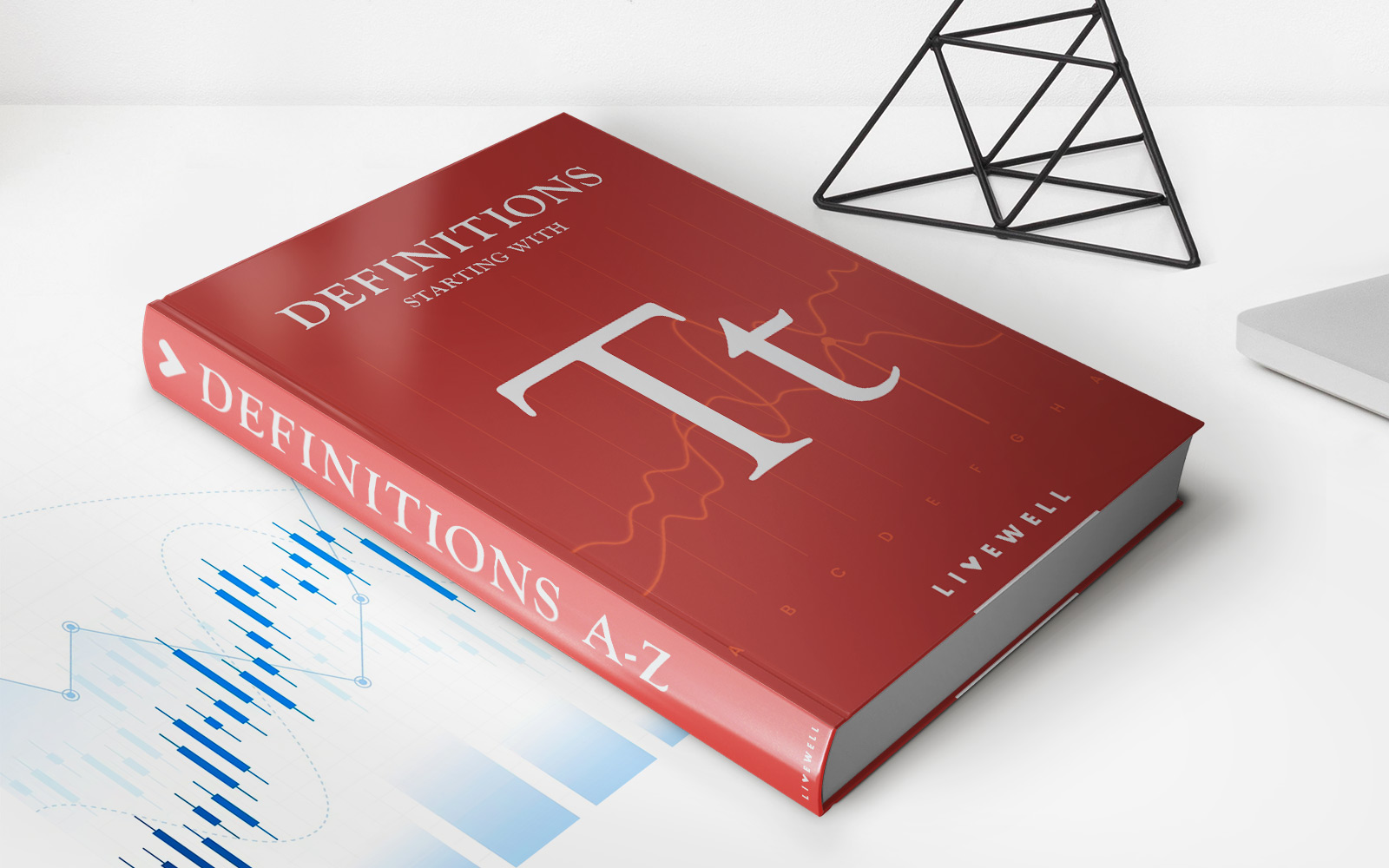

Finance
How Much Is The Old Age Pension In Canada
Modified: December 29, 2023
Discover the financial benefits of the old age pension in Canada. Learn how to plan for your retirement and maximize your finances.
(Many of the links in this article redirect to a specific reviewed product. Your purchase of these products through affiliate links helps to generate commission for LiveWell, at no extra cost. Learn more)
Table of Contents
Introduction
As individuals approach their golden years, financial security becomes a significant concern. In Canada, the government provides a system of support to its senior citizens through the Old Age Pension program. Understanding the eligibility criteria, payment calculations, and application process for old age pension is vital to ensure financial stability during retirement.
The Old Age Pension, also known as the Canada Pension Plan (CPP) or the Quebec Pension Plan (QPP), is a monthly income-based assistance program designed to provide financial support to Canadians who have reached a certain age. This program aims to ensure that individuals can maintain a basic standard of living as they retire from the workforce.
To be eligible for old age pension in Canada, you must meet several criteria. Firstly, you must be at least 65 years old and have lived in Canada for a minimum of 10 years after turning 18. In some cases, individuals as young as 60 may be eligible for a reduced pension amount, depending on their individual circumstances.
Income also plays a role in determining eligibility. The Old Age Pension program is income-tested, meaning that individuals with higher income levels may receive a reduced pension amount or may not be eligible at all. It is essential to consider your total income, including employment earnings, investment income, and government benefits, when determining how much Old Age Pension you may receive.
The Old Age Pension amount is calculated based on your contribution to the CPP or QPP during your working years. The more years you have contributed and the higher your average yearly earnings, the larger your pension payment may be. It is important to note that to be eligible for the maximum pension amount, you must have contributed to the plan for a specific number of years.
In the next sections, we will delve further into the eligibility criteria, payment calculations, application process, and other relevant information to help you understand how the Old Age Pension program works in Canada.
Eligibility criteria for old age pension in Canada
To qualify for the Old Age Pension in Canada, you must meet specific eligibility criteria set by the government. These criteria ensure that the program benefits those who are in genuine need of financial assistance during their retirement years.
Firstly, you must be at least 65 years old to be eligible for the full Old Age Pension amount. However, it is worth noting that you can apply as early as 60 years old, but your pension amount will be reduced. The reduction is calculated based on the number of months you receive the pension before turning 65.
Secondly, you must have been a resident of Canada for at least 10 years after turning 18. This means you need to have lived in Canada for a considerable portion of your adult life to qualify for the Old Age Pension. If you have not resided in Canada for the required period, you may not be eligible.
Next, your income level plays a significant role in determining your eligibility for the Old Age Pension. The Old Age Pension program is income-tested, which means that individuals with higher incomes may receive a reduced pension amount. Your income includes various sources such as employment earnings, investment income, and government benefits.
If you have a spouse or common-law partner, their income may also impact your eligibility. The combined income of you and your partner will be considered when determining the Old Age Pension amount. In some cases, if both you and your partner are eligible, you may receive a combined pension payment known as the combined pension amount.
Moreover, there are certain residency requirements for receiving the Old Age Pension if you live outside of Canada. You must have resided in Canada for at least 20 years after turning 18 to be eligible for the full pension amount while living abroad. If you have resided in Canada for less than 20 years, your pension amount may be reduced.
Additionally, there may be specific rules and eligibility criteria for individuals who have lived or worked outside Canada. It is advisable to consult the government’s official website or speak with a pension expert to understand how your international residency or work history may affect your eligibility for the Old Age Pension.
Understanding and meeting the eligibility criteria is crucial to determine if you qualify for the Old Age Pension in Canada. By fulfilling the necessary requirements, you can ensure that you receive the financial assistance you need during your retirement years.
Calculating the old age pension amount
The amount of Old Age Pension you receive in Canada is determined by a calculation based on several factors. Understanding how this calculation works can help you estimate the pension amount you may be eligible for.
Firstly, the calculation takes into account your contribution to the Canada Pension Plan (CPP) or the Quebec Pension Plan (QPP) during your working years. The more years you have contributed and the higher your average yearly earnings, the larger your pension payment is likely to be. This is because the pension amount is based on a percentage of your average lifetime earnings, referred to as your “average monthly pensionable earnings.”
Secondly, a key factor in the calculation is the Year’s Maximum Pensionable Earnings (YMPE). The YMPE is the maximum income level on which you can contribute to the CPP or QPP for that specific year. It is adjusted annually to account for inflation. The YMPE determines the maximum amount of income used to compute your pension benefits.
Your average monthly pensionable earnings are determined by dividing your total pensionable earnings by the years in which you contributed. Then, this figure is compared to the YMPE for the corresponding years to calculate your contribution rate. The contribution rate represents the percentage of your average monthly pensionable earnings that will be considered when calculating your Old Age Pension amount.
It is important to note that to be eligible for the maximum pension amount, you must have contributed to the CPP or QPP for a specific number of years. This is referred to as the “contribution period” and is typically set at 39 years. If you have contributed for fewer years, your pension amount may be reduced.
The actual calculation formula for the Old Age Pension is complex, involving multiple variables and thresholds. To simplify this process, the Canadian government provides an online calculator called the CPP Retirement Pension Estimator. This tool allows you to estimate your Old Age Pension amount based on your specific earnings history and other factors.
Moreover, it is worth noting that the Old Age Pension is subject to annual increases to account for inflation. The increase percentage is determined by the government and is applied in January of each year.
By understanding how the Old Age Pension amount is calculated, you can gain a better understanding of what to expect in terms of financial support during your retirement years. Utilizing resources such as the CPP Retirement Pension Estimator can help you plan and prepare for your future.
Maximum payment amount
When it comes to the Old Age Pension in Canada, there is a maximum payment amount that individuals can receive. This maximum payment is determined based on various factors, including your contributions to the Canada Pension Plan (CPP) or Quebec Pension Plan (QPP) and the number of years you have contributed to the plan.
The maximum payment amount is typically adjusted annually to account for inflation and changes in the average wage level. The government sets a threshold, known as the “Maximum Monthly Pensionable Earnings” (MMPE). The MMPE is the highest income level on which you and your employer contribute to the CPP or QPP. It is also used to determine the maximum amount of pensionable earnings that can be included in the calculation of your Old Age Pension.
For example, let’s say the MMPE for the current year is set at $60,000. If your average monthly pensionable earnings fall within or below this threshold, you would be eligible for the maximum payment amount. However, if your average monthly earnings exceed the MMPE, your pension amount will be calculated based on the portion of your earnings up to the MMPE.
It is important to note that the maximum payment amount is also influenced by the number of years you have contributed to the CPP or QPP. To be eligible for the maximum pension amount, you must have contributed for a specific number of years. This period is typically set at 39 years. If you have contributed for fewer years, your pension amount may be reduced proportionally.
The maximum payment amount is subject to yearly increases to account for cost-of-living adjustments. These increases are intended to ensure that the amount provided remains in line with the rising expenses and inflation rates.
It is also worth mentioning that the maximum payment amount for the Old Age Pension may differ for individuals who reside outside Canada. These variations are related to factors such as the number of years you have resided in Canada after turning 18 and the country-specific agreements in place regarding pension entitlements.
Understanding the maximum payment amount for the Old Age Pension is essential for individuals planning their retirement finances. By familiarizing yourself with the factors that influence the maximum pension payment, you can better estimate the financial support you may receive during your retirement years.
Factors that can affect the payment amount
The payment amount of the Old Age Pension in Canada is influenced by various factors. These factors determine the final pension amount you may receive and can include income levels, retirement age, and other individual circumstances.
One of the primary factors that can affect the payment amount is your income level. The Old Age Pension program uses an income-tested approach, meaning that individuals with higher incomes may receive a reduced pension amount or may not be eligible at all. The income threshold at which your pension starts to be reduced is known as the “clawback” threshold. If your income exceeds this threshold, your pension payment will be reduced by a certain percentage. The specific clawback rate varies annually and is set by the government.
Another factor that can affect the payment amount is the age at which you start receiving the pension. While the standard age to start receiving the full pension amount is 65, you have the option to apply as early as 60. However, by choosing to receive the pension earlier, you will receive a reduced amount. The reduction is calculated based on the number of months you receive the pension before turning 65.
Furthermore, if you have a spouse or common-law partner, their income can impact your pension amount as well. The combined income of you and your partner is considered when determining the Old Age Pension payment. In some cases, if both individuals are eligible, they may receive a combined pension payment referred to as the combined pension amount.
Other factors that can affect the payment amount include residency status and contributions to the Canada Pension Plan (CPP) or Quebec Pension Plan (QPP). If you live outside of Canada, there may be specific rules and eligibility criteria regarding your residency that can impact your pension amount. Additionally, the number of years you have contributed to the CPP or QPP can influence your payment amount. To be eligible for the maximum pension amount, you must have contributed for a specific number of years.
It is important to note that these factors can vary for each individual, and the payment amount is calculated based on personal circumstances. To get an accurate estimate of the payment amount, you can use the CPP Retirement Pension Estimator provided by the government. This tool takes into account your income, age, and other relevant factors to provide an estimation of your pension payment.
By considering these factors, you can better understand how the payment amount of the Old Age Pension is determined and plan your retirement finances accordingly.
Applying for old age pension
Applying for the Old Age Pension in Canada involves a straightforward process that can be done online or through a paper application. To ensure a smooth application process, it is important to gather the necessary documents and understand the steps involved.
The first step is to verify your eligibility for the Old Age Pension. You must be at least 60 years old to apply, although the full pension amount is typically received starting at age 65. It is essential to review the specific criteria set by the government to ensure you meet the requirements.
Once you have confirmed your eligibility, you can proceed with the application. If you prefer to apply online, you can do so through the Government of Canada’s official website for Old Age Security and Canada Pension Plan services. The online application allows you to complete and submit your application electronically, which can expedite the processing time.
If you prefer to apply using a paper application, you can obtain the necessary forms from Service Canada offices, local post offices, or by downloading and printing the forms from the government’s website. Fill out the application form accurately and provide all the required information. Make sure to sign and date the form before submitting it.
When applying for the Old Age Pension, you will need to provide certain documents to support your application. These may include your birth certificate or other proof of birth, proof of Canadian residency, social insurance number, marriage or divorce certificates (if applicable), and any other relevant documentation to verify your eligibility.
It is essential to ensure that all the documents are valid and up-to-date. If you are submitting a paper application, make copies of the required documents and include them with your application. In case you are applying online, you may need to scan and upload the supporting documents in a specified format.
After submitting your application, it will be processed by Service Canada. The processing time can vary, but you can expect to receive a decision on your application within a few months. If approved, the government will start issuing your Old Age Pension payments, which are typically deposited directly into your bank account on a monthly basis.
In some cases, you may be eligible for retroactive payments, which cover the period between your eligibility start date and the approval of your application. Retroactive payments can provide you with a lump sum to compensate for the period that you were eligible but had not yet applied for the pension.
If your application is denied, you have the right to appeal the decision. The government provides an appeals process where you can state your case and provide any additional information to support your eligibility for the Old Age Pension.
Applying for the Old Age Pension is an important step towards securing financial support during your retirement years. By understanding the application process and preparing the necessary documents, you can ensure a smooth and timely application experience.
Retroactive payments
Retroactive payments are a key aspect of the Old Age Pension program in Canada. These payments are designed to compensate eligible individuals for the period between their eligibility start date and the approval of their application. By receiving retroactive payments, individuals can receive a lump sum of money to cover the months in which they were eligible for the pension but had not yet applied.
To be eligible for retroactive payments, you must meet the eligibility criteria for the Old Age Pension and have a valid reason for the delay in applying. Valid reasons for not applying earlier could include illness, disability, or a lack of awareness about the program. It is important to note that retroactive payments are not automatically granted, and you must apply for them separately.
When applying for retroactive payments, you will need to provide documentation and evidence supporting your eligibility during the retroactive period. This may include medical records, affidavits, or any other relevant documents that demonstrate why you were unable to apply for the pension earlier.
The amount of retroactive payments you receive will depend on the number of months for which you were eligible and the specific rules set by the government. Retroactive payments are typically calculated based on the average monthly pension amount during the retroactive period. The government will determine the exact amount you are entitled to based on their calculations and the information provided.
If you are eligible for retroactive payments, you will receive the lump sum payment in addition to your regular monthly pension amount. Retroactive payments can provide a significant financial boost, helping you cover expenses or address any financial challenges you may have faced during the period of retroactivity.
It’s important to note that the retroactive payment process can take some time. Once you submit your application for retroactive payments, it will be reviewed and processed by Service Canada. The processing time may vary, but you can expect to receive a decision within a few months.
If your application for retroactive payments is approved, the lump sum payment will be issued to you. It is typically deposited directly into your bank account, similar to the regular monthly pension payments. This lump sum can provide you with a sense of financial security and ensure that you receive the support you are entitled to for the retroactive period.
Before applying for retroactive payments, it is advisable to consult with a pension expert or contact Service Canada for guidance on the process. They can provide you with the necessary information and ensure that you include all required documents to support your retroactive payment claim.
Overall, retroactive payments can serve as a valuable financial resource to bridge the gap between your eligibility start date and the approval of your application for the Old Age Pension. These payments can provide retroactive support and help you maintain financial stability during your retirement years.
Common questions about old age pension in Canada
As the Old Age Pension program in Canada plays a significant role in the financial well-being of retirees, it is natural to have questions about how it works and what to expect. Here are answers to some common questions that individuals often have about the Old Age Pension:
-
When should I apply for the Old Age Pension?
You can apply for the Old Age Pension as early as age 60, but the full pension amount is typically received starting at age 65. The choice of when to apply depends on your personal circumstances and financial needs. -
How much Old Age Pension will I receive?
The amount of Old Age Pension is calculated based on various factors, including your average monthly pensionable earnings, number of years contributed to the Canada Pension Plan (CPP) or Quebec Pension Plan (QPP), and other individual circumstances. The maximum payment amount is set each year, taking into account inflation and changes in the average wage level. You can use the CPP Retirement Pension Estimator provided by the government to get an estimate of your pension amount. -
Can I receive the Old Age Pension if I have never worked or contributed to the CPP/QPP?
Yes, you may still be eligible for the Old Age Pension even if you have never worked or contributed to the CPP/QPP. The eligibility is based on residency requirements and other factors. However, your pension amount may be affected if you don’t have a sufficient contribution history. -
Can I receive the Old Age Pension if I am still working?
Yes, you can receive the Old Age Pension while still working. However, your income level may affect the pension amount you receive. The Old Age Pension program is income-tested, meaning that individuals with higher incomes may receive a reduced pension amount or may not be eligible at all. It is recommended to consider your income and eligibility requirements when planning for retirement. -
Can I receive the Old Age Pension if I live outside of Canada?
Yes, you may be eligible for the Old Age Pension if you live outside of Canada. However, there may be specific rules and residency requirements that can affect your eligibility and payment amount. It is advisable to consult the government’s official website or contact Service Canada for detailed information regarding your specific situation.
These are just a few of the common questions individuals have regarding the Old Age Pension in Canada. If you have further inquiries or need specific information, it is recommended to consult official government resources, speak with a pension expert, or contact Service Canada directly. Understanding the nuances of the Old Age Pension program can help you make informed decisions for a more secure financial future during your retirement years.
Conclusion
The Old Age Pension program in Canada provides vital financial support to individuals as they navigate their retirement years. By understanding the eligibility criteria, payment calculations, and application process, you can ensure that you receive the maximum pension amount you are entitled to.
Eligibility for the Old Age Pension is based on factors such as age, residency, and income level. Meeting the eligibility criteria and contributing to the Canada Pension Plan (CPP) or Quebec Pension Plan (QPP) for a sufficient number of years are key requirements for receiving the maximum pension amount. It is important to consider your individual circumstances, including income and marital status, when determining the pension amount you can expect to receive.
Applying for the Old Age Pension can be done online or through a paper application. Regardless of the method you choose, ensuring you have the necessary documents and understanding the process can help you navigate the application successfully. Retroactive payments may be available to compensate for the period between your eligibility start date and the approval of your application, providing additional financial support.
Situational factors such as income levels, residency status, and contributions can affect the payment amount of the Old Age Pension. By being aware of these factors, you can better estimate the amount of financial support you may receive during your retirement years.
If you have any questions or need further guidance regarding the Old Age Pension program, it is advisable to consult official government resources, speak with a pension expert, or contact Service Canada for assistance. Understanding the intricacies of the program ensures that you receive the necessary support to maintain a comfortable standard of living during your retirement.
Planning for retirement should include a comprehensive understanding of the Old Age Pension program in Canada. By familiarizing yourself with the eligibility criteria, payment calculations, and application process, you can take proactive steps to secure financial stability and enjoy a fulfilling retirement.














